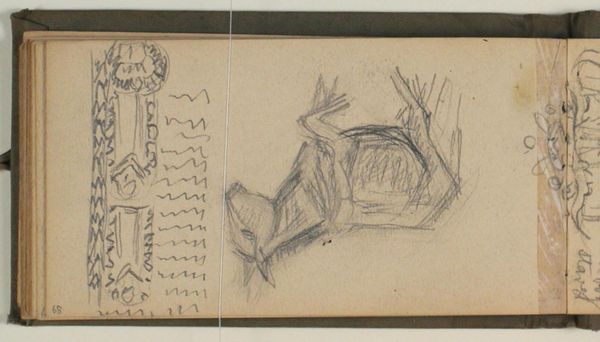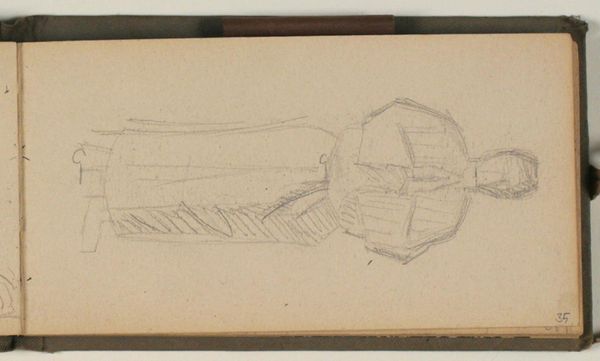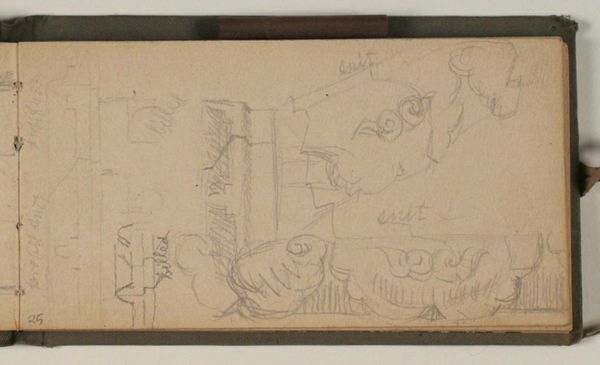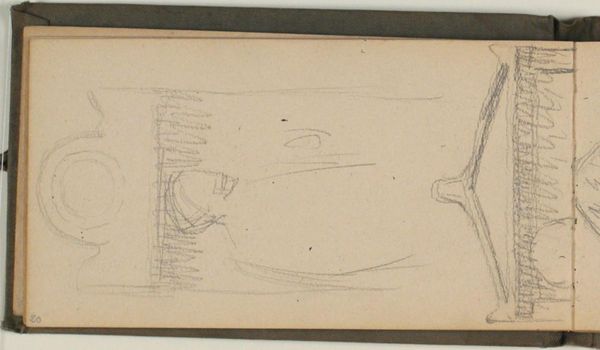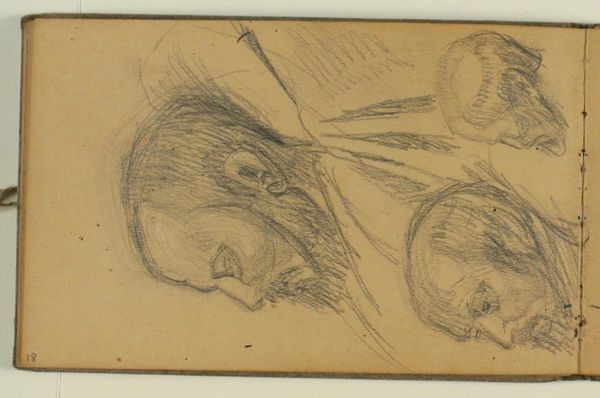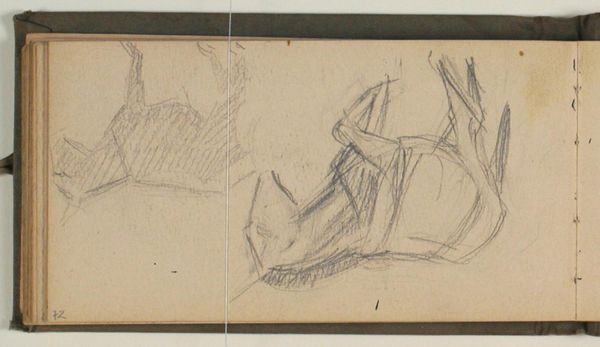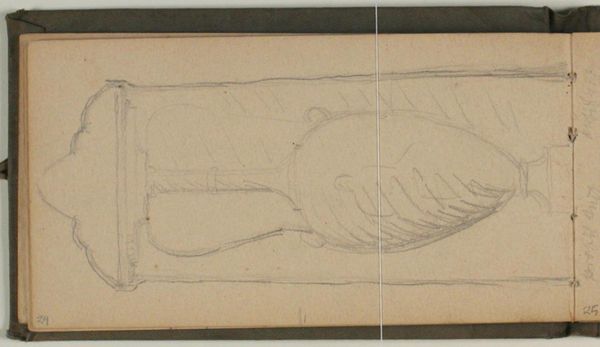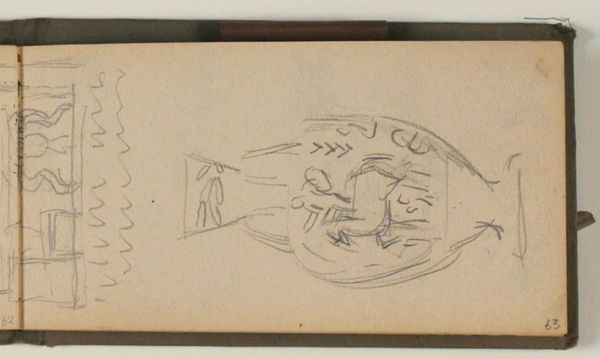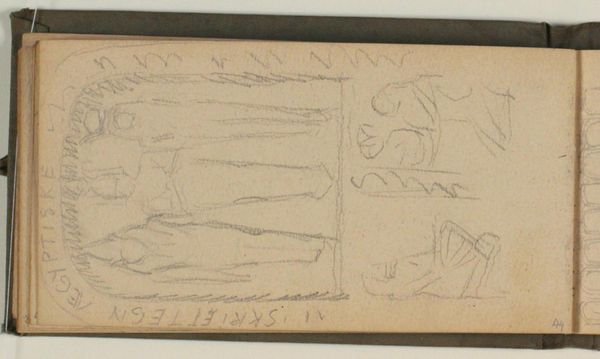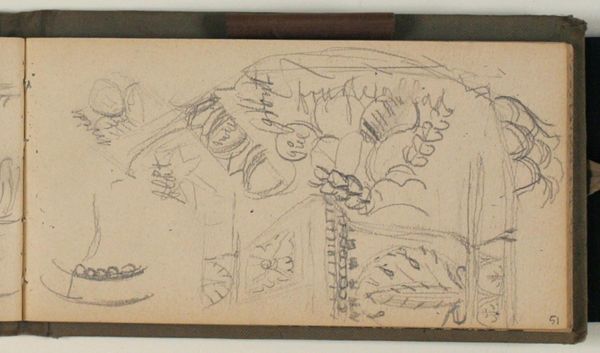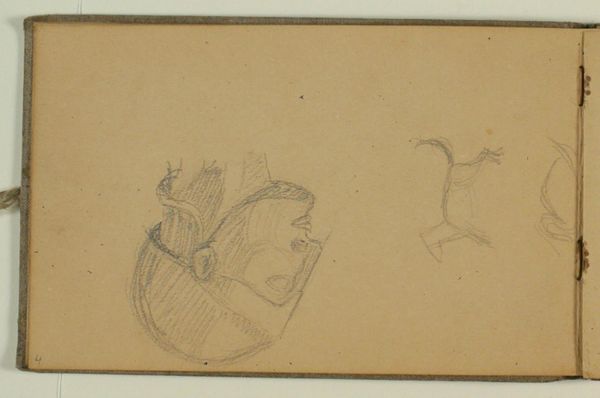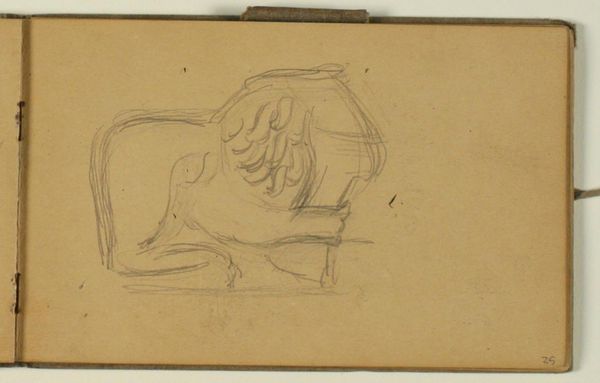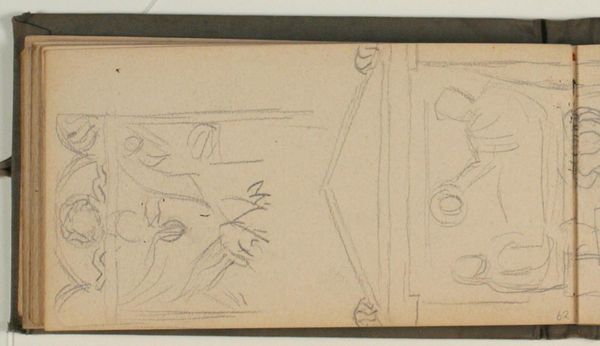
drawing, paper, pencil
#
drawing
#
medieval
#
figuration
#
paper
#
pencil
#
line
#
history-painting
Dimensions: 92 mm (height) x 174 mm (width) (bladmaal)
Editor: Here we have Niels Larsen Stevns' "Studier af klassiske gravsteler," created in 1919. It appears to be a pencil drawing on paper, featuring studies of classical gravestones. There's something incredibly raw and immediate about seeing these initial sketches. What do you see in this piece beyond the simple depiction of gravestones? Curator: Well, immediately, my eye is drawn to the materiality of the piece. It’s a sketch – pencil on paper. In 1919, Stevns chose readily available, inexpensive materials to capture these studies. Was he intending these as preliminary sketches for larger, more formal pieces, or did the act of sketching itself hold a different kind of value for him? Think about the act of physically going to the site, the labor involved in that, in observing, in recreating... Editor: That's interesting. I hadn't considered the labour aspect. Does the medium—the drawing—somehow change our perception versus if these were, say, photographs of the same objects? Curator: Absolutely. Photography would be a straightforward reproduction, whereas drawing involves selection, interpretation, and manual skill. This manual process immediately involves the artist. In this way the "copy" also bears the stamp of its own mode of production. Also, considering the historical context of 1919 – the aftermath of WWI, social upheaval – what might Stevns be trying to grasp by revisiting classical funereal art? Is he contemplating his historical place? The place of his time within a historical context? Editor: That’s a very insightful question. Viewing the stones not just as subjects, but almost as relics touched by time, certainly shifts my perspective. Curator: Right. It prompts us to question what artistic labour truly signifies and how artists mediate and shape it through their craft and social awareness. Editor: Thanks, that material perspective really opened up new ways to think about this seemingly simple sketch. Curator: Indeed. It's in those tangible interactions – artist, materials, context – that the work truly reveals itself.
Comments
No comments
Be the first to comment and join the conversation on the ultimate creative platform.
